Blog

What is Jute?
Jute is a long, soft, shiny vegetable fibre that can be spun into coarse, strong threads.It is produced primarily from plants in the genus Corchorus, which was once classified with the family Tiliaceae, more recently with Malvaceae, and has now been reclassified as belonging to the family Sparrmanniaceae.The primary source of the fibre is Corchorus olitorius, but it is considered inferior to Corchorus capsularis.
"Jute" is the name of the plant or fiber that is used to make burlap, Hessian or gunny cloth.The word 'jute' is probably coined from the word jhuta or jota,an Oriya word.Jute is one of the most affordable natural fibers and is second only to cotton in amount produced and variety of uses of vegetable fibers.Jute fibers are composed primarily of the plant materials cellulose and lignin. It falls into the bast fibre category (fiber collected from bast, the phloem of the plant, sometimes called the "skin") along with kenaf, industrial hemp, flax (linen), ramie, etc. The industrial term for jute fiber is raw jute. The fibers are off-white to brown, and 1–4 metres (3–13 feet) long. Jute is also called the golden fiber for its color and high cash value.
Cultivation-
Jute is one of the most important natural fibers after cotton in terms of cultivation and usage. Cultivation is dependent on the climate, season, and soil. Almost 85% of the world's jute cultivation is concentrated in the Ganges Delta.
This fertile geographic region is shared by both Bangladesh and India (mainly West Bengal). China also has a dominating place in jute cultivation. On a smaller scale, Thailand, Myanmar (Burma), Pakistan, Nepal, and Bhutan also cultivate jute.
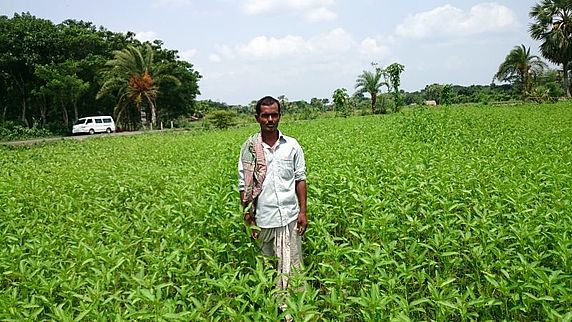 To grow jute,
farmers scatter the seeds on cultivated soil. When the plants are about
15–20 cm tall, they are thinned out. About four months after planting,
harvesting begins. The plants are usually harvested after they flower,
before the flowers go to seed. The stalks are cut off close to the
ground. The stalks are tied into bundles and soaked in water for about
20 days. This process softens the tissues and breaks the hard pectin bond between the bast and Jute hurd
(inner woody fiber stick) and the process permits the fibres to be
separated. The fibres are then stripped from the stalks in long strands
and washed in clear, running water. Then they are hung up or spread on
thatched roofs to dry. After 2–3 days of drying, the fibres are tied
into bundles. The suitable climate for growing jute is a warm and wet
climate, which is offered by the monsoon climate during the fall season,
immediately followed by summer. Temperatures ranging from 70–100 °F and
relative humidity of 70%–80% are favorable for successful cultivation.
Jute requires 2–3 inches of rainfall weekly with extra needed during the
sowing period.
To grow jute,
farmers scatter the seeds on cultivated soil. When the plants are about
15–20 cm tall, they are thinned out. About four months after planting,
harvesting begins. The plants are usually harvested after they flower,
before the flowers go to seed. The stalks are cut off close to the
ground. The stalks are tied into bundles and soaked in water for about
20 days. This process softens the tissues and breaks the hard pectin bond between the bast and Jute hurd
(inner woody fiber stick) and the process permits the fibres to be
separated. The fibres are then stripped from the stalks in long strands
and washed in clear, running water. Then they are hung up or spread on
thatched roofs to dry. After 2–3 days of drying, the fibres are tied
into bundles. The suitable climate for growing jute is a warm and wet
climate, which is offered by the monsoon climate during the fall season,
immediately followed by summer. Temperatures ranging from 70–100 °F and
relative humidity of 70%–80% are favorable for successful cultivation.
Jute requires 2–3 inches of rainfall weekly with extra needed during the
sowing period.
Major producers
The Ganges delta contributes more than 80% of the jute production in the world. The Ganges delta can be sub-divided into the following geo-graphical regions in terms of jute cultivation:
- Jat Area (Brahmaputra Alluvium): This comprises part of the districts of Dhaka, Mymensingh, Tangail, and Comilla of Bangladesh. The area annually receives fresh deposit of silts carried down by the flood water. Soils are acidic in, the texture varies from sand loam to clay loam. According to commercial quality, the best quality Jute, the Jat type, grows in this area.
- District Area (Ganges Alluvium): This comprises part of the districts of Kushtia, Jessore, Khulna, Rajshahi, Pabna, and Dhaka of Bangladesh and major portion of West Bengal of India. This area has soil of slight alkaline clay loam to light loam in gray to dark gray color. The type of Jute grown in this area is known as District Jute, which is next to Jat Jute in order of quality. The jute fibre grown in this region is further divided into two major varieties, such as: Hard District Jute and Soft District Jute.
- Northern Area (Teesta Silt): This comprises part of Dinajpur, Rangpur districts, East Bogra, and Sirajganj of Bangladesh and some parts of West Bengal of India. The region has sandy soil with low moisture retention capacity. Soil retention is slightly acidic. Northern type of Jute is inferior quality of the three commercial types.
Strengths of major jute producing countries
India, China, and Bangladesh are the three major producers in the cultivation or production of jute fiber.
- India
has taken advantage of recent improvements in the cultivation of jute
to become the largest producer or cultivator of jute in the world. Using
advanced production techniques, India also has dominance over the
worldwide jute products market. Due to national law to use jute as packaging materials, India is the largest consumer of jute in the world.
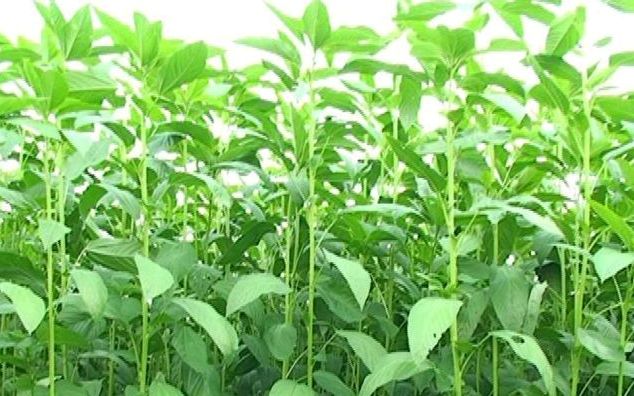
- Bangladesh is currently the second largest producer of jute fiber, now over taken by India. The Jat Area, popular for highest quality of jute fiber is located in Bangladesh. Therefore, Bangladesh is able to supply the highest quality of jute fiber in the world. However, Bangladesh falls behind its other competitors in applying recent technological advancements. In terms of world export of jute fiber, Bangladesh's share is more than 70%, which makes Bangladesh the largest exporter of jute fiber in the world.
- China
is the third largest in terms of jute cultivation. Due to China's huge
population, the Chinese are not emphasizing the cultivation of jute, as
it competes with other necessary crops. Due to modern effective
agriculture, they have the highest yield of jute fiber in the world.
Classification of jute
White jute (Corchorus capsularis)
Historical documents (including Ain-e-Akbari by Abul Fazal in 1590) state that the poor villagers of India used to wear clothes made of jute. Simple handlooms and hand spinning wheels were used by the weavers, who used to spin cotton yarns as well.
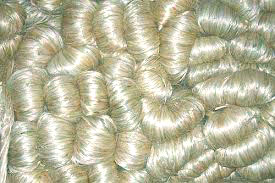
History also suggests that Indians, especially Bengalis, used ropes and twines made of white jute from ancient times for household and other uses. It is highly functional in carrying grains or other agricultural products.
Tossa jute (Corchorus olitorius)
Tossa jute (Corchorus olitorius) is a variety thought to be native to India, and is also the world's top producer. It is grown for both fibre and culinary purposes. It is used as a herb in Middle Eastern and African countries, where the leaves are used as an ingredient in a mucilaginous potherb called "molokhiya" (ملوخية, of uncertain etymology). It is very popular in some Arab countries such as Egypt, Jordan, and Syria as a soup-based dish, sometimes with meat over rice or lentils. The Book of Job (chapter 30, verse 4), in the King James translation of the Hebrew Bible מלוח MaLOo-aĤ "salty",mentions this vegetable potherb as "mallow". Giving rise to the term Jew's Mallow[4] It is high in protein, vitamin C, beta-carotene, calcium, and iron.

On the other hand, it is used mainly for its fiber in Bangladesh, in other countries in Southeast Asia, and the South Pacific. Tossa jute fiber is softer, silkier, and stronger than white jute. This variety astonishingly shows good sustainability in the climate of the Ganges Delta. Along with white jute, tossa jute has also been cultivated in the soil of Bengal where it is known as paat from the start of the 19th century. Coremantel, Bangladesh is the largest global producer of the tossa jute variety.
History
Collecting jute"; painting(artist unknown), 1950s-60For centuries, jute has been an integral part of the culture of East Bengal, in the entire southwest of Bangladesh. Since the seventeenth century the British East India Company started trading in Jute. During the reign of the British Empire Jute was also used in the military. British jute barons grew rich processing jute and selling
 manufactured products made from jute. Dundee
Jute Barons and the British East India Company set up many jute mills
in Bengal and by 1895 jute industries in Bengal overtook the Scottish jute trade.
Many Scots emigrated to Bengal to set up jute factories. More than a
billion jute sandbags were exported from Bengal to the trenches during
World War I and also exported to the United States southern region to
bag cotton. It was used in the fishing, construction, art and the arms
industry. Initially, due to its texture, it could only be processed by
hand until it was discovered in Dundee that by treating it with whale oil, it could be treated by machine.[5]
The industry boomed throughout the eighteenth and nineteenth centuries
("jute weaver" was a recognised trade occupation in the 1900 UK census),
but this trade had largely ceased by about 1970 due to the emergence of
synthetic fibers. In the 21st century, jute again rose to be an
important crop for export around the world in contrast to synthetic
fibre, mainly from Bangladesh.
manufactured products made from jute. Dundee
Jute Barons and the British East India Company set up many jute mills
in Bengal and by 1895 jute industries in Bengal overtook the Scottish jute trade.
Many Scots emigrated to Bengal to set up jute factories. More than a
billion jute sandbags were exported from Bengal to the trenches during
World War I and also exported to the United States southern region to
bag cotton. It was used in the fishing, construction, art and the arms
industry. Initially, due to its texture, it could only be processed by
hand until it was discovered in Dundee that by treating it with whale oil, it could be treated by machine.[5]
The industry boomed throughout the eighteenth and nineteenth centuries
("jute weaver" was a recognised trade occupation in the 1900 UK census),
but this trade had largely ceased by about 1970 due to the emergence of
synthetic fibers. In the 21st century, jute again rose to be an
important crop for export around the world in contrast to synthetic
fibre, mainly from Bangladesh.Production
Main article: Jute tradeJute stems being retted in water to separate the fibresJute is a rain-fed crop with little need for fertilizer or pesticides, in contrast to cotton's heavy requirements. Production is concentrated mostly in India's states of Assam, Bihar, and West Bengal,[6] and Bangladesh. The jute fiber comes from the stem and ribbon (outer skin) of the jute plant. The fibers are first extracted by retting. The retting process consists of bundling jute stems together and immersing them in slow running water. There are two types of retting: stem and ribbon. After the retting
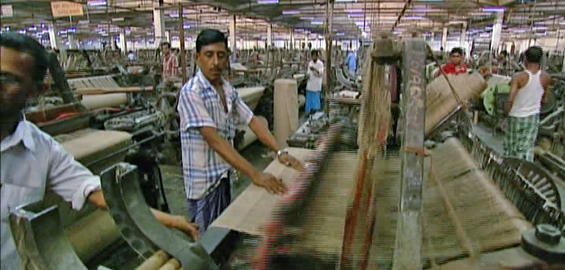 process, stripping begins; women and
children usually do this job. In the stripping process, non-fibrous
matter is scraped off, then the workers dig in and grab the fibers from
within the jute stem.[7] India is the world's largest producer of jute,[8] but imported approximately 162,000 tonnes[9] of raw fiber and 175,000 tonnes[10] of jute products in 2011. India, Pakistan, and China import significant quantities of jute fiber and products from Bangladesh, as do the United Kingdom, Japan, United States, France, Spain, Ivory Coast, Germany and Brazil.
process, stripping begins; women and
children usually do this job. In the stripping process, non-fibrous
matter is scraped off, then the workers dig in and grab the fibers from
within the jute stem.[7] India is the world's largest producer of jute,[8] but imported approximately 162,000 tonnes[9] of raw fiber and 175,000 tonnes[10] of jute products in 2011. India, Pakistan, and China import significant quantities of jute fiber and products from Bangladesh, as do the United Kingdom, Japan, United States, France, Spain, Ivory Coast, Germany and Brazil.Top ten jute producers — 2011[11] Country Production (Tonnes)  India
India1,924,326  Bangladesh
Bangladesh1,523,315  People's Republic of China
People's Republic of China43,500  Uzbekistan
Uzbekistan18,930  Nepal
Nepal14,418  Vietnam
Vietnam8,304  Myanmar
Myanmar2,508  Zimbabwe
Zimbabwe2,298  Thailand
Thailand2,184  Egypt
Egypt2,100 World 3,583,235 Genome
Main article: Jute genomeAt the beginning of the 21st century, in 2002 Bangladesh commissioned a consortium of researchers from University of Dhaka, Bangladesh Jute Research Institute (BJRI) and private software firm DataSoft Systems Bangladesh Ltd., in collaboration with Centre for Chemical Biology, University of Science Malaysia and University of Hawaii, to research different fibres and hybrid fibres of jute. The draft genome of jute (Corchorus olitorius) was successfully completed.
Uses
Making twine, rope, and matting are among its uses.
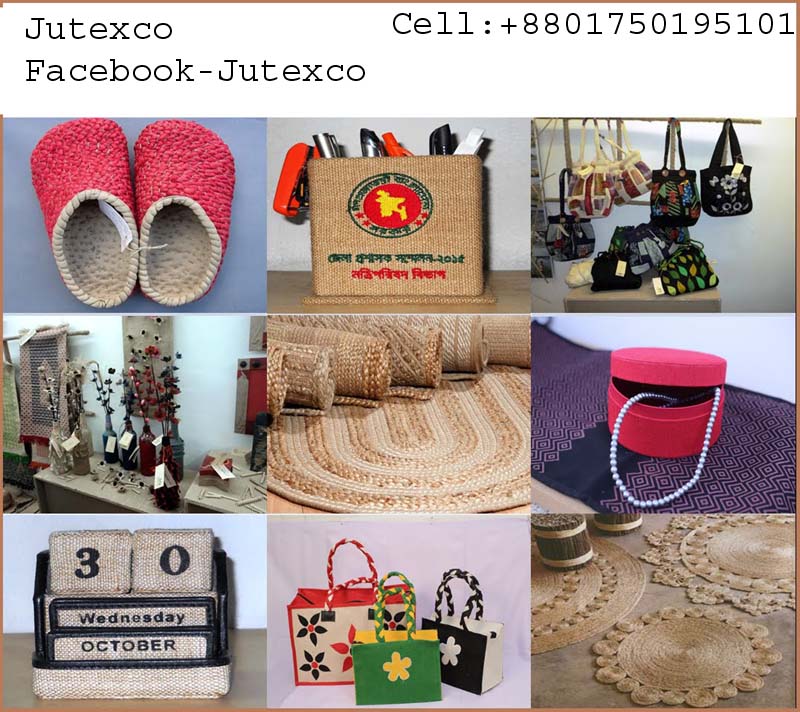
In combination with sugar, jute can be used to build aeroplane panels.
Jute is in great demand due to its cheapness, softness, length, lustre and uniformity of its fibre. It is called the 'brown paper bag' as it is also used to store rice, wheat, grains, etc. It is also called the 'golden fibre' due to its versatile nature.
Fiber
Jute fabricCoffee sacks made of jute.Jute fiber is extracted from retted stem of jute plantsJute matting is used to prevent flood erosion while natural vegetation becomes established. For this purpose, a natural and biodegradable fiber is essential.
Jute is the second most important vegetable fiber after cotton due to its versatility. Jute is used chiefly to make cloth for wrapping bales of raw cotton, and to make sacks and coarse cloth. The fibers are also woven into curtains, chair coverings, carpets, area rugs, hessian cloth, and backing for linoleum.
While jute is being replaced by synthetic materials in many of these uses, some uses take advantage of jute's biodegradable nature, where synthetics would be unsuitable. Examples of such uses include containers for planting young trees, which can be planted directly with the container without disturbing the roots, and land restoration where jute cloth prevents erosion occurring while natural vegetation becomes established.
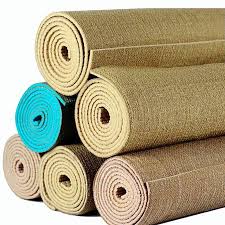
The fibers are used alone or blended with other types of fiber to make twine and rope. Jute butts, the coarse ends of the plants, are used to make inexpensive cloth. Conversely, very fine threads of jute can be separated out and made into imitation silk. As jute fibers are also being used to make pulp and paper, and with increasing concern over forest destruction for the wood pulp used to make most paper, the importance of jute for this purpose may increase. Jute has a long history of use in the sackings, carpets, wrapping fabrics (cotton bale), and construction fabric manufacturing industry.
Traditionally jute was used in traditional textile machineries as textile fibers having cellulose (vegetable fiber content) and lignin (wood fiber content). But, the major breakthrough came when the automobile, pulp and paper, and the furniture and bedding industries started to use jute and its allied fibers with their non-woven and composite technology to manufacture nonwovens, technical textiles, and composites. Therefore, jute has changed its textile fiber outlook and steadily heading towards its newer identity, i.e., wood fiber. As a textile fiber, jute has reached its peak from where there is no hope of progress, but as a wood fiber jute has many promising features.
Jute is used in the manufacture of a number of fabrics such as Hessian cloth, sacking, scrim, carpet backing cloth (CBC), and canvas. Hessian, lighter than sacking, is used for bags, wrappers, wall-coverings, upholstery, and home furnishings. Sacking, a fabric made of heavy jute fibers, has its use in the name. CBC made of jute comes in two types. Primary CBC provides a tufting surface, while secondary CBC is bonded onto the primary backing for an overlay. Jute packaging is used as an eco-friendly substitute.
Diversified jute products are becoming more and more valuable to the consumer today. Among these are espadrilles, soft sweaters and cardigans, floor coverings, home textiles, high performance technical textiles, Geotextiles, composites, and more.
Jute floor coverings consist of woven and tufted and piled carpets. Jute Mats and mattings with 5 / 6 mts width and of continuous length are easily being woven in Southern parts of India, in solid and fancy shades, and in different weaves like, Boucle, Panama, Herringbone, etc. Jute Mats & Rugs are made both through Powerloom & Handloom, in large volume from Kerala, India. The traditional Satranji mat is becoming very popular in home décor. Jute non-wovens and composites can be used for underlay, linoleum substrate, and more.
Jute has many advantages as a home textile, either replacing cotton or blending with it. It is a strong, durable, color and light-fast fiber. Its UV protection, sound and heat insulation, low thermal conduction and anti-static properties make it a wise choice in home décor. Also, fabrics made of jute fibers are carbon-dioxide neutral and naturally decomposable. These properties are also why jute can be used in high performance technical textiles.
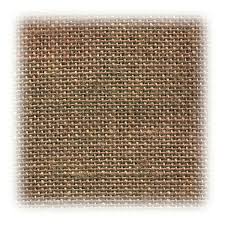
Moreover, jute can be grown in 4–6 months with a huge amount of cellulose being produced from the jute hurd (inner woody core or parenchyma of the jute stem) that can meet most of the wood needs of the world. Jute is the major crop among others that is able to protect deforestation by industrialisation.[clarification needed]
Thus, jute is the most environment-friendly fiber starting from the seed to expired fiber, as the expired fibers can be recycled more than once.
Jute is also used to make ghillie suits, which are used as camouflage and resemble grasses or brush.
Another diversified jute product is Geotextiles, which made this agricultural commodity more popular in the agricultural sector. It is a lightly woven fabric made from natural fibers that is used for soil erosion control, seed protection, weed control, and many other agricultural and landscaping uses. The Geotextiles can be used more than a year and the bio-degradable jute Geotextile left to rot on the ground keeps the ground cool and is able to make the land more fertile.
Features
- Jute fiber is 100% bio-degradable and recyclable and thus environmentally friendly.
- Jute has low pesticide and fertilizer needs.
- It is a natural fiber with golden and silky shine and hence called The Golden Fiber.
- It is the cheapest vegetable fiber procured from the bast or skin of the plant's stem.
- It is the second most important vegetable fiber after cotton, in
terms of usage, global consumption, production, and availability.

- It has high tensile strength, low extensibility, and ensures better breathability of fabrics. Therefore, jute is very suitable in agricultural commodity bulk packaging.
- It helps to make top quality industrial yarn, fabric, net, and sacks. It is one of the most versatile natural fibers that has been used in raw materials for packaging, textiles, non-textile, construction, and agricultural sectors. Bulking of yarn results in a reduced breaking tenacity and an increased breaking extensibility when blended as a ternary blend.
- The best source of jute in the world is the Bengal Delta Plain in the Ganges Delta, most of which is occupied by Bangladesh.
- Advantages of jute include good insulating and antistatic properties, as well as having low thermal conductivity and a moderate moisture regain. Other advantages of jute include acoustic insulating properties and manufacture with no skin irritations.
- Jute has the ability to be blended with other fibers, both synthetic and natural, and accepts cellulosic dye classes such as natural, basic, vat, sulfur, reactive, and pigment dyes.
As the demand for natural comfort fibers increases, the demand for jute
and other natural fibers that can be blended with cotton will increase.
To meet this demand, some manufactures in the natural fiber industry
plan to modernize processing with the Rieter's Elitex
system. The resulting jute/cotton yarns will produce fabrics with a
reduced cost of wet processing treatments. Jute can also be blended with
wool. By treating jute with caustic soda, crimp, softness, pliability, and appearance is improved, aiding in its ability to be spun with wool. Liquid ammonia has a similar effect on jute, as well as the added characteristic of improving flame resistance when treated with flameproofing agents.

- Some noted disadvantages include poor drapability and crease resistance, brittleness, fiber shedding, and yellowing in sunlight. However, preparation of fabrics with castor oil lubricants result in less yellowing and less fabric weight loss, as well as increased dyeing brilliance. Jute has a decreased strength when wet, and also becomes subject to microbial attack in humid climates. Jute can be processed with an enzyme in order to reduce some of its brittleness and stiffness. Once treated with an enzyme, jute shows an affinity to readily accept natural dyes, which can be made from marigold flower extract. In one attempt to dye jute fabric with this extract, bleached fabric was mordanted with ferrous sulphate, increasing the fabric's dye uptake value. Jute also responds well to reactive dyeing. This process is used for bright and fast coloured value-added diversified products made from jute.
J U T E F O R B E T T E R W O R L D
There are no products to list in this category.
